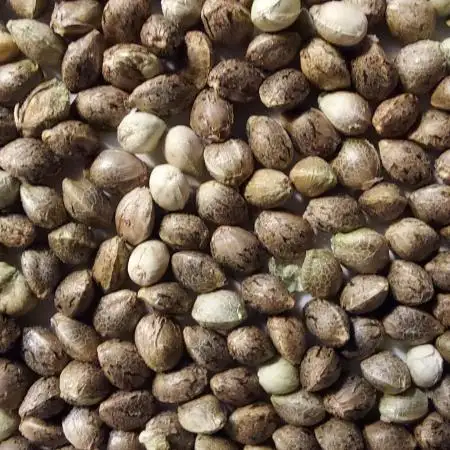The Grow Awards 2026 🏆
Nutrient issues using coconut coir blend
Ultravioletanswered grow question 10mo ago
Maybe 40 bucks for a probe. Long read apologies in advance.
The calcium (Ca), magnesium (Mg), and potassium (K) ratio, often referred to as "Cal Mag K," is important in pH because these elements act as cations (positively charged ions) that can help neutralize soil acidity, meaning a balanced ratio can help maintain a suitable pH level for plant growth by counteracting the hydrogen ions present in acidic soil; essentially, the higher the concentration of these cations, the less acidic the soil becomes.
Key points about the Cal Mag K ratio and pH:
Soil structure: The Ca:Mg ratio specifically can affect soil structure, with calcium improving aeration while magnesium promotes particle adhesion.
Antagonistic effects: If one element is present in excessive amounts compared to the others, it can hinder the uptake of the other nutrients.
Soil electrical conductivity (EC) and cation exchange capacity (CEC) are both soil properties that can be used to evaluate soil quality. EC is sensitive to salts in the soil, while CEC measures the soil's ability to retain positively charged ions.
Base saturation is the percentage of soil exchange sites that are occupied by basic cations, such as calcium, magnesium, potassium, and sodium. It's a measure of soil fertility and is calculated from soil test data. Base saturation is closely related to pH, and higher base saturation means higher pH.
Cation exchange capacity (CEC) is a measure of how many positively charged ions, or cations, a soil can hold and exchange. Soils with low CEC need frequent, short irrigation, while soils with high CEC need less frequent, longer irrigation. Organic matter has a very high CEC ranging from 250 to 400 meq/100 g. The CEC of coco coir is typically between 40–100 meq/100g. The more charge a medium can hold, the greater it can buffer pH. Same environment, same schedule, same fert, different capacity of charge. Soils with high CEC can hold more nutrients and water and can buffer against changes in pH. Like anything more is not always better, bigger charge, bigger potential, and different dynamics.
Happy frog medium having higher CEC is able to store more of the cations. Buffering from high ec longer than a plant with a lower CEC medium.
Same idea as reading EC for water solution but using a probe made to read the soil. Little pricy for good ones but should find them at most garden stores. "PPM" stands for "parts per million" and "EC" stands for "electrical conductivity"; both are used to measure the concentration of dissolved salts in a solution, like soil, with EC being considered a more precise method as it directly measures the ability of the solution to conduct electricity, while PPM is a measure of the weight of dissolved solids in a given volume of water. Results are best taken after a full saturation with water for even readings, as a general rule of thumb, the ideal EC range for cannabis plants is between 1.2 and 2.0 mS/, like everything else, every stage is different.
Leach the soil by thoroughly watering it with plain, pH-balanced water until the excess drains out, effectively diluting the salt concentration in the soil; repeat this process if necessary, and then monitor the EC level with a soil EC meter to ensure it's within the desired range for your plants for the stage of growth.
Key points to remember:
Dilution is key: Adding more water is the main way to lower soil EC.
Use pH-balanced water: Ensure the water you use for leaching has the appropriate pH level for your plants.
Check with a meter: Always use a soil EC meter to measure the current EC level and confirm if the leaching process has been successful.
How much? How long is a piece of string? The only way to know is the measure.
Good luck, hope she bounces back strong.
Scrubbyjimbobanswered grow question 10mo ago
I would say Hashy is in the right neighborhood. You can't treat plants that are in a media that devoid of nutrients the same way you treat plants growing in a charged soil. In the Happy Frog you're just supplemental feeding to fill in the gaps of what the soil isn't providing. In the coco blend you're gonna be more responsible for providing everything.
Also regarding nutrients, what you feed in soil may not necessarily work in a soiless context. Many soil based nutrients are more complex molecules that require further breakdown before the plant can use them. This happens in the microbiom within the soil. Nutrients made for use in hydro are typically already in their simplest forms and can be absorbed immediately.
Personally I don't really get why people buy these overpriced soils and blends. If you're supplying the nutrients yourself you can grow in practically anything as long as it's not contaminating anything with unintended residual stuff. I've used just plain ass topsoil out of the yard. I've used aquarium gravel ....heck I've used gravel from the driveway lol.
2 likes
Complain
00110001001001111Oanswered grow question 10mo ago
K also relies significantly on active transport, like P. forgot to include that tidbit... same reasons why amplifying it doesn't correlat to any benefits beyond simply maintaining a healhy level in substrate ready for it to grab on demand.
2 likes
Complain
00110001001001111Oanswered grow question 10mo ago
New to soilless? hopefulyl this isn't condescending, but this is required for anything below to work
fertigate with 10% runoff, minimum... when you repeat i'm going to assume you know what you are doing. The runoff is essential to avoid buildup in the substrate. Not doing so basically negates the super power of soilless growing -- doesn't matter if it is coco or sphagnum peat moss.
Looks more like nutrition related than a bad batch of coco coir. The plants were healthy earlier, and if it wasn't buffered, they would have suffered greatly and in a very noticeable way - whether too much Na+ or K+ released, flip a coin. This coco was buffered properly, so no worries there. Even if it was off a bit, it'd be at equilibrium, now... it should not be leaching or adding anything at this stage even if not perfectly buffered to start.
Too much P? Dark and glossy, so too much N. Even the one without the tip burn is headed that way.
Good studies have shown that going over 50-60ppm P doesn't really do much for the yield. P is one of the elements that the plant gets about 2/3rds of need (assuming all other factors are kosher) from active transport. So, the plant has some sort of feedback system to control a significant portion of how much P enters the plant. Having enough present for easy access and not inhibiting other stuff is all you need of P to maximize results, all other factors remaining the same.
Similar studies show going over 180ppm of K isn't useful, either. In my experience when i've tried to push closer to 200ppm, I always end up with a toxicity at some point down the line, even if it takes weeks, so it seems to be a fairly repeatable outcome.
I'd drop that N to about 50ppm.. that'd be about half dose for mid to late flower. Since it's loaded up, might be able to go even lower, if the lushness doesn't recede fast enough for your taste. Once it's a healther shade, go to 90-100ppm. Bet under normal conditions ~80 gives a slow fade if you are into that sort of thing.
Mg should be around 75ppm, give or take relative to local tap water contents. This can contribute to lushness (too dark of a shade). Worth checking.
Your mileage can vary on these values due to interrelationship of nutes. If we don't have a fairly similar ratio and pH (~6.0), your numbers are likely to deviate further from these numbers.
there are free apps that can take gauranteed analysis information from several products and tabulate it all for you. Tracking this stuff in a soilless/hydro grow can make diagnosis extremely easy once you learn upper/lower thresholds through observing the plant and adjusting over time.
I'd definitely give a water only irrigation or two, and in future go to a mid flower formula of
100 n
50-60 p
170-180 K
Ca 100+
Mg 75ish
S 100+
Again, local tap water will make some small variations. This is a low EC formula that still pushes boundaries of K. Ca can go quite a bit higher but this would definitely avoid deficiencies, if fed 100+ entire grow up to that point. These are ballpark values. If anything is WAY off, consider adjusting, but small deviations are irrelevant... still have to observe and react to plant to dictate further adjustments.
This particular grow, i'd look at current ppm levels of these elements and adjust further down while maintining other elements' ppm, if it's been overfed with any select few nutritional elements. The free apps can calculate dose - well, the good ones can. "hydrobuddy" i believe is one.
Don't need to overfeed to get proper yields given ambient co2. If you get 50-60g/sq ft from average yielding plants, you can feel pretty good about not leaving any yield on the table due to any input you control. Heavy yielders can push higher, but prolly need to work exclusively with clones to do that consistently.
2 likes
Complain
oldskoolkoolanswered grow question 10mo ago
They say you should never feed coco plain water.Iv always used a coco specific food as the coco likes to hold onto the calcium and iron.If your feeding normal nutrients the you need to add calcium with every feed.The best food for coco is advanced nutrients PH Perfect Sensi Grow and Bloom.No more ph pens.All good coco is buffered.
2 likes
Complain
Hashyanswered grow question 10mo ago
Hi, I looked through your diary, my thoughts are you may have been treating both plants the same, soil ph requirements are slightly different from coco ph requirements. Also waterings habits should be different, soil grows are better with wet dry cycle and coco needs to stay more damp then soil, also more run off is needed when growing in coco. Could be many factors for the tip burn. I'd recommend using just either soil or coco and not having different plants in different grow medium. Good luck.
2 likes
Complain
AsNoriuanswered grow question 10mo ago
Just flush coco, plus reduce feed or/and make sure you water with run off. Think you have salt build up, in soil would be hard to sort, but here i don't see any problems in sorting that ... few plain feeds for soil would be wise too, it has buffering with bacteria and fauna, but problems could arise too, so be on safe side.
1 like
Complain
All_our_small_plantsanswered grow question 10mo ago
Sieht nach einer Nährstoffe Blockade aus durch falschen PH wert im boden. Das kommt wenn zu viel Salze vom dünger im Boden sind. Mess den runoff und wenn der PH wert nicht zwischen 5.8 und 6.5 liegt must du ein paar mal nur kit Wasser und korrigiertem PH wert giessen. Der EC wert sollte nicht über 2.2 liegen. Wenn du das beachtest wird es wieder. Der Schaden an den Blätter bleibt aber und sie werden noch etwas mehr kaputt gehen. Also stelle dich darauf ein. Viel erfolg
2 likes
Complain
Green_clawsanswered grow question 10mo ago
Looks like she's over fed or built up salts and now burning her, make sure
You have run off with coco to prevent building up... I would give just ph water for next 2 feeds..
Hope this helps.
1 like
Complain
Organomananswered grow question 10mo ago
BC-1 is way over fed or suffering from a build up of nutrient salts in the coco.
Have you been getting 10-15% run off each time you irrigate the coco plant?
If not, that could be your problem, otherwise it is a simple case of repeated over feeding.
The coco coir can not "do anything" to the plant on its own, it is due to something you might or might not be doing.
1 like
Complain
SmallCannabisDojoanswered grow question 10mo ago
If you have not buffered your coco than it will pull out the calcium and provide a lot of potassium.
1 like
Complain
m0useanswered grow question 10mo ago
Just looks ike burning. aka to much feed. I don't think the medium is causing this on its own.
1 like
Complain
ATLien415answered grow question 10mo ago
I'd check the runoff from BC1 during a flush of the soil, looking for acidity problems to point towards the coco being the culprit or EC problems leaning towards fertilizer issues. With how widespread the issue is, I'd first make sure my medium isn't locked out.
1 like
Complain



















